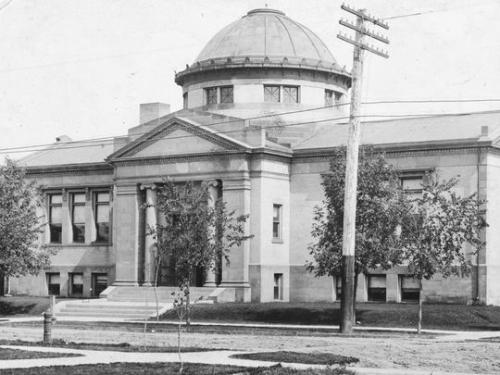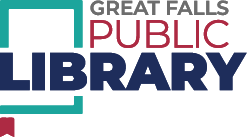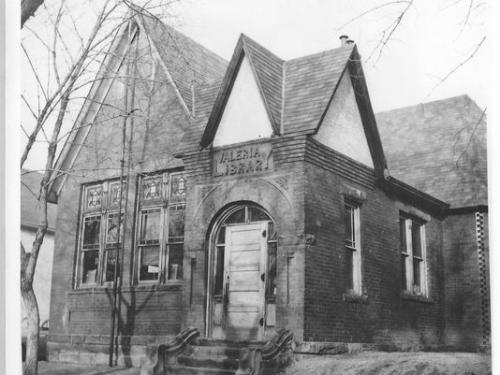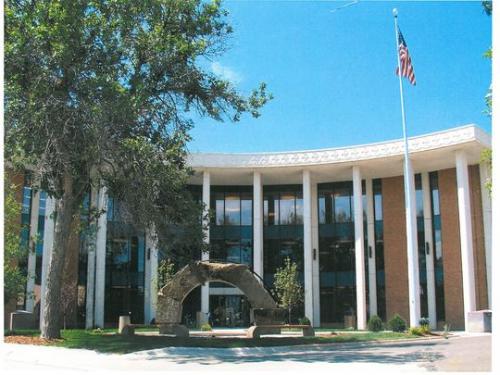
The Great Falls Carnegie Library as it appeared sometime around 1910 (Photo: Great Falls Public Library)

The Great Falls Carnegie Library as it appeared sometime around 1910 (Photo: Great Falls Public Library)
By Kathy Mora, 2004
Since Ben Franklin founded the Free library of Philadelphia in 1731 – the first public library in the nation – libraries have flourished throughout the country. Libraries have long been viewed as a mark of a civilized people and land; nevertheless, even at a time when many in the eastern states still viewed Montana as a rough and uncultured area, libraries began to thrive here as well. It was scarcely sixty years after Lewis & Clark first traversed and documented the area that the first library was established in Helena in 1868.
Great Falls was not to be far behind. Just one year after Montana had attained its statehood, the first public library in Great Falls was founded. Paris Gibson, widely recognized for his planning and development of the city, played a lesser known role in the library’s establishment.
From its creation, the Great Falls library exhibited signs of being a progressive organization. Although the physical space of the library has changed several times over the years, the progressive and forward thinking that helped establish the first library has been evident throughout intervening years. The basic tenet that “the comfort, convenience and legitimate desires of all patrons, whether clad in overalls or mink coats, should receive pleasant, sympathetic and intelligent consideration by every member of the library personnel” (Smith et al. 1938), still holds true over a hundred years later.
From Gibson to Google: A History of the Great Falls Public Library
Conclusion
Since the founding of the Valeria Art and Library Association in the late 19th century and continuing to the present day, library service had played a significant in the Great Falls community – from providing a place for young men in a frontier town to broaden their minds to helping to broaden the minds of a city populace through acceptance of a woman of color; from the pioneering of children’s services in the state to serving isolated members of the community through bookmobile service; from the contributions of Paris and Valeria Gibson to the ubiquity of Google. More than a century later, the library continues to provide information opportunities to all, regardless of whether they are “clad in overalls or mink”.
References:
- Brown, S. (1981). The Valeria. Great Falls, MT: Great Falls Public Library.
- City of Great Falls. (1091). City Ordinance No. 341. Great Falls, MT.
- Curtis, G. T., Crutcher Dr. E., & Matteson, H.H. (1902, Mar. 28). Letter to Andrew Carnegie (on behalf of Business Men’s Association). Great Falls Tribune. n.p.
- Dyrland, G. (1983, Oct. 17). Library Computers Coming, Groups Told. Great Falls Tribune. p2.
- Ehlers, D. (1967, Oct. 29). Mrs. Jacobs Still Looks to Future. Great Falls Tribune. p2.
- Franklin, R. (1965). Election Issues; Public Opinion Survey. Great Falls, MT: Public Relations Council: 1965
- Grant to allow Preservation of Valeria Library Windows. (1981). Great Falls Tribune. p1A
- Great Falls Public Library. (1958). Internal Library Document. Great Falls, MT. Great Falls Public Library.
- Great Falls Public Library to Be Opened the Last Day of This Week. (1903, Oct. 11). Great Falls Tribune. p.6.
- Harper, J. (1987, Mar.-Apr). Those Beloved Bookmobiles. Montana Magazine. P. 20-24
- History of the Great Falls Public Library. (1959, June). Internal Library Document. Great Falls, MT: Great Falls Public Library.
- Ivanova, K.O. (1997a, Dec. 19). Librarian, Censorship Foe, Dies. Great Falls Tribune. p. 1M.
- Ivanova, K.O. (1997c, Nov. 18). Library Considers Vending Machines. Great Falls Tribune. p.M1.
- Ivanova, K.O. (1997c, Nov. 18). Library Vows to Crackdown on Late Fines. Great Falls Tribune. p.M1.
- Jacobs, A. et al. (1965). Preliminary Program for the Architect: 1965. Great Falls, MT: Great Falls Public Library.
- Kilroy, L. E. (1965, Oct.). Internal Library Document. Great Falls, MT: Great Falls Public Library.
- Kotynski, Tom. (1995, Sept. 12). You Can Try Internet at Library. Column. Great Falls Tribune p.1D.
- Library Board Agrees to Buy Shrine Building. (1963, Aug. 8). Great Falls Tribune. p.10.
- Lorenzen, M. (2002). Deconstructing the Philanthropic Library: The Sociological Reasons Behind Andrew Carnegie’s Millions to Libraries. Retrieved July 7, 2003, from the World Wide Web: Http://www/micheallorenzen.com/carnegie.html.
- Milwaukee Depot Could Answer Our Public Library Needs (1958, Mar. 13). Great Falls Tribune. p.6.
- Miss Trigg, Veteran Librarian, Honor Guest at Banquet Tonight. (1941, Oct. 7). Great Falls Tribune. p.5.
- Mort, Denise. (1981, Oct. 18). City Library Features Heritage of Area Through Stained Glass Great Falls Tribune. p.B1.
- Mrs. Amy Patterson, County Librarian for 25 Years, Will Retire June 30. (1960, May 6). Great Falls Tribune. p.13.
- National Library Week – Bookmobile on Wheels. (1958, Mar. 16). Great Falls Tribune. p.25.
- Reading Rooms Needed; A Timely Appeal for a Public Library in Great Falls. (1889, Oct. 22). Letter to the Editor. Great Falls Tribune. n.p.
- Roeder, Richard B. (1992, Autumn). A Settlement on the Plains: Paris Gibson and the Building of Great Falls. Montana, The Magazine of Western History. Pp. 4-19.
- Scherf, Margaret. (1958, April). Letter to Alma Jacobs. Great Falls, MT.
- Smith, J.N., et al. (1938, Jan. 5). Letter to Library Board of Trustees. Great Falls, MT.
- Valeria Public Library: A Brief Outline of the Origin and History of the Library at Great Falls. (1894, Jan. 28). Great Falls Tribune. n.p.
- Valeria Public Library. (1895). Finding List. Great Falls, MT: Ridgeley Press.
- Wezeman, Frederick. (1957). Great Falls Public Library, Great Falls, Montana; A survey: Recommendations for Future Development and Planning. Great Falls, MT.





